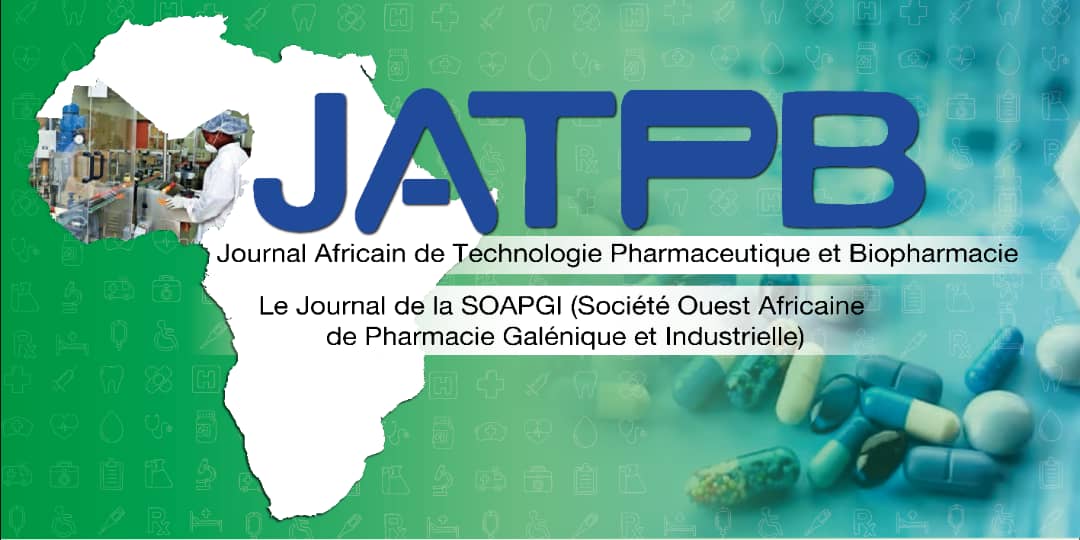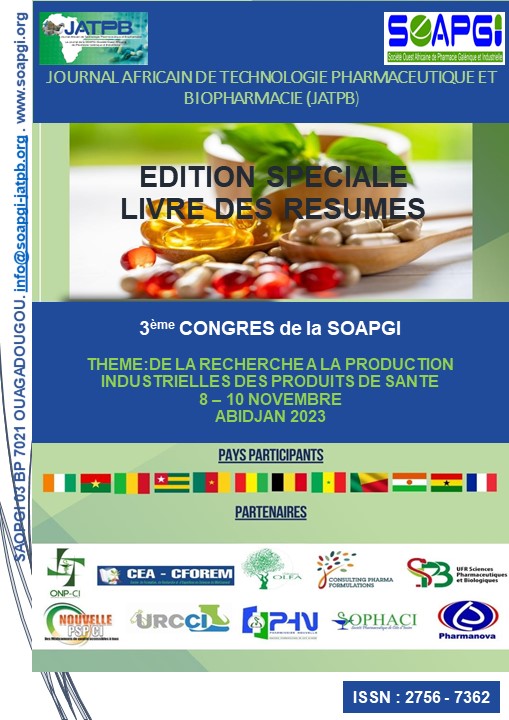C41 - Investigation of the binding properties of purified Pentadesma butyracea gum: Anatural alternative to a synthetic polymer
DOI :
https://doi.org/10.57220/jatpb.v2i3.72Mots-clés :
Pentadesma butyracea gum,, conventional release table, binding propertyRésumé
Abstract: The focus of most pharmaceutical research in recent times has been the use of natural products like gums as pharmaceutical excipients because they are safer, economical and readily available. This study aimed to investigate the applicability of gum extracted from the exudates from the stem bark of Pentadesma butyracea as a binder in conventional release tablets using acacia gum as a reference polymer. The purified Pentadesma butyracea gum (PBG) was precipitated from the crude gum mucilage using 96% ethanol. Conventional-release paracetamol tablets were formulated using seven (7) different concentrations of the PBG mucilage (0.5 – 6 %w/w) as a binder via wet granulation (PB1 – PB7). The same approach was used for the reference conventional release paracetamol tablets (AC1- AC7). The drug-excipients and excipients-gum compatibility studies were evaluated using the FTIR. The formulated tablets were evaluated using both pharmacopoeia and non-pharmacopoeia tests. Appropriate mathematical models were used to determine the similarity (f2) and the difference (f1) factors of the dissolution profiles of the test and reference formulations. Granules for batches PB1, AC1, PB2, AC2 and AC3 had fair flow properties, whereas the rest had good flow properties. The FTIR studies showed no interactions between the drug and excipients. All formulations passed the pharmacopoeia and non- pharmacopoeia tests except for formulations PB1, PB2, PB3 and AC1 which failed the friability test, PB1 and AC1 which failed the hardness test, and AC7 which also failed the disintegration test. An increase in gum concentration led to a corresponding increase in the mechanical properties of the tablets. A comparative study showed no significant difference in the hardness and tensile strength of the test and reference tablets. All formulations except PB6 were similar to their reference formulations since f1 > 50 and f2 < 15. In conclusion, the PBG exhibited a good binding property comparable to acacia gum.
Téléchargements
Publiée
Comment citer
Numéro
Rubrique
Catégories
Licence
(c) Tous droits réservés Mary-Ann Archer, Kwabena Ofori-Kwakye, Raphael Johnson, Isaac Yaw Attah, Emmanuel Adakudugu, Frederick William Akuffo Owusu, Esther Oppong Eshun, Doris Kumadoh, Akwasi Sodzi 2023

Ce travail est disponible sous la licence Creative Commons Attribution 4.0 International .






